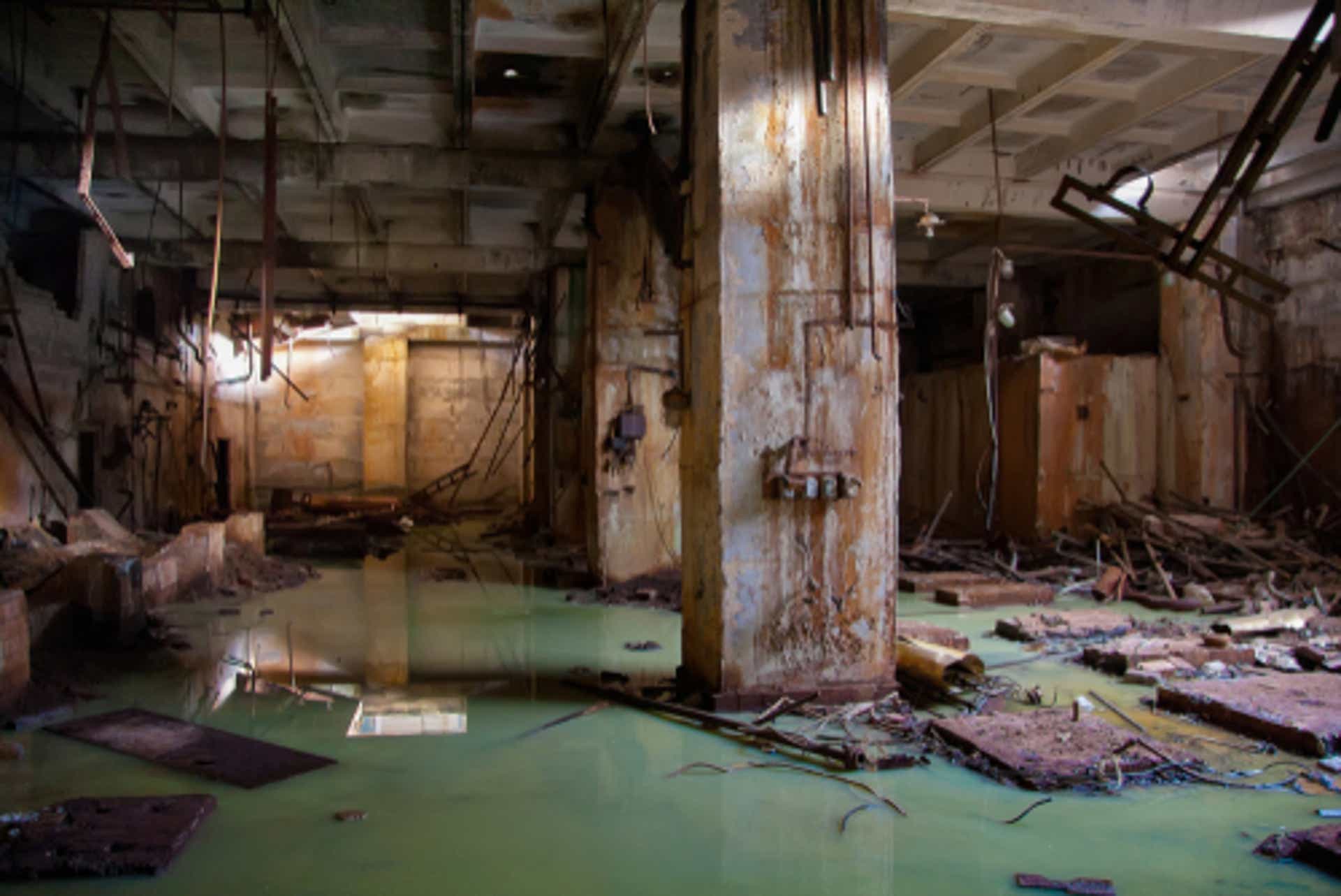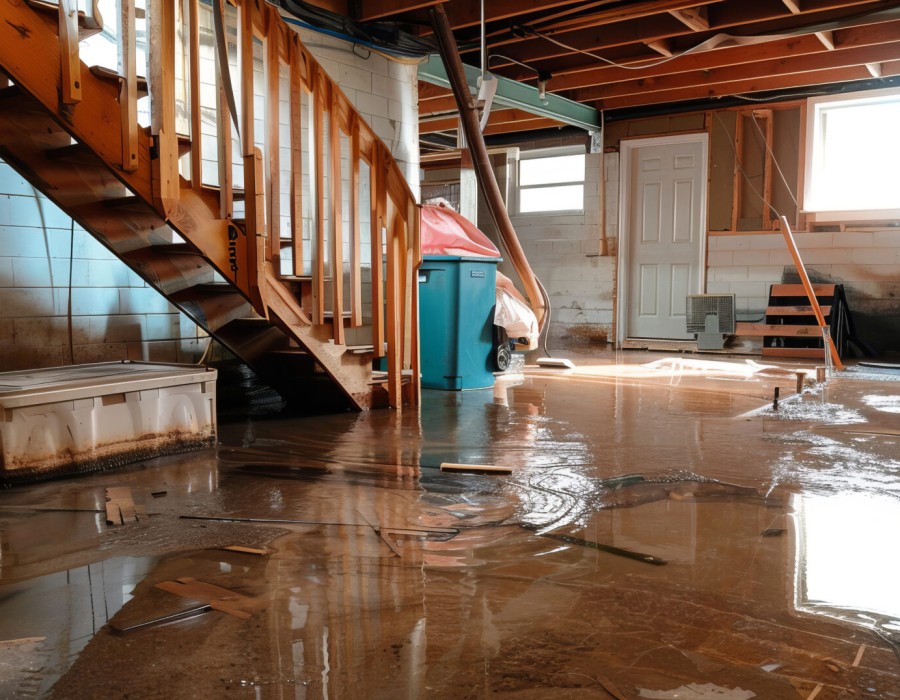A flooded basement is more than just a mess; it’s a serious threat to a home's structural integrity and indoor air quality. Restoration services properly dry flooded basement using a systematic, scientific process that goes far beyond simply pumping out water and letting it air dry—a method that often leads to mold and rot. The professional approach involves rapid water extraction, removal of saturated materials, and creating a controlled drying environment with industrial-grade air movers and dehumidifiers. This entire process is carefully monitored with moisture meters to ensure the basement is returned to its normal, pre-flood dry state, getting the job done completely and correctly.
The First Steps: Water Removal and Damage Assessment
Before any drying can begin, the site must be made safe and the standing water must be removed. This initial phase sets the stage for the entire project.
Safety and Water Extraction
The first priority is always safety. Professionals will first check for electrical hazards and shut off power to the basement if necessary. Once the area is secure, they begin extracting the standing water. For significant flooding, they use high-capacity submersible pumps. For the remaining water and in tighter spaces, truck-mounted extraction units are used. These machines are far more powerful than any shop vac, allowing them to remove the bulk of the water very quickly.
Assessment and Material Removal
With the standing water gone, the real assessment begins. Technicians use moisture meters and thermal imaging cameras to determine exactly how far the water has wicked up the walls and what materials are saturated. In a finished basement, this almost always means removing anything porous that has been soaked. This includes:
- Carpet and carpet padding
- Baseboards and other wood trim
These materials act like sponges, trapping water and contaminants. They cannot be reliably dried in place and must be removed to allow the underlying structure, such as the concrete floor and wood framing, to dry out.
- Bonus Tip: Professionals will often perform a "flood cut," which involves cutting the drywall about one to two feet above the visible water line. This ensures all the saturated material and any water that has wicked up inside the wall cavity is completely removed.

The Science of Creating a Drying Environment
Once the basement is cleared of debris and saturated materials, the structural drying can begin. This is a carefully controlled process based on the principles of psychrometry, the science of drying.
The Role of Dehumidification
The key to drying a structure is to make the air inside drier than the materials themselves. This is achieved with commercial dehumidifiers, most often Low-Grain Refrigerant (LGR) units. An LGR dehumidifier works by cooling the air to its dew point, causing the moisture to condense and collect, where it is then pumped away. These machines can remove dozens of gallons of water from the air every day, creating an intensely dry environment. This difference in vapor pressure actively pulls the trapped moisture out of the concrete floor and wood framing.
The Importance of Air Movement
At the same time, professionals strategically place high-velocity air movers (not just simple fans) throughout the basement. These are aimed directly at the wet surfaces, like the concrete floor and the exposed wall studs. The constant, high-speed airflow sweeps across these surfaces, dramatically accelerating the rate of evaporation. This evaporated moisture is then pulled out of the air by the dehumidifiers in a continuous cycle.
- Bonus Tip: The placement of the equipment is critical. Technicians will position the air movers to create a circular vortex of air around the room, ensuring every wet surface receives consistent airflow.
Comparing Professional Drying to DIY Methods
The difference in equipment and methodology leads to vastly different outcomes when drying a basement.
Monitoring and Completion: How to Know It's Truly Dry
Properly drying a basement is not a "set it and forget it" job. It requires constant monitoring and verification.

Technicians will return to the site daily to take moisture readings from various materials throughout the basement, including concrete, wood sills, and framing. They establish a "dry standard" by taking a reading from an unaffected, dry area of the home. The drying equipment is not removed until the moisture content of all the affected materials meets this pre-determined dry standard. This data-driven approach is the only way to be certain that the basement is completely dry and safe for reconstruction.
Things to Consider Before Drying Your Basement
Before the drying process can be fully effective, a few key questions must be answered.
Identify and Stop the Source
Where did the water come from? Was it a burst pipe, a failed sump pump, a sewer backup, or groundwater seeping through the foundation? The source of the water must be identified and repaired before the mitigation process begins, otherwise the basement will simply flood again.
Determine the Water Category
The type of water determines the scope of the cleanup. If the flood was from a clean source like a supply line (Category 1), the process is straightforward drying. However, if the water came from a source like a sewer backup (Category 3), the job becomes a biohazard cleanup. This requires the removal of more materials and a thorough disinfection of the entire area before drying can even begin.
Common Questions About Basement Flooding
How long does it take to professionally dry a basement?
While every situation is different, the active drying process with equipment in place typically takes between three and five days. More severe flooding or difficult materials like dense concrete can sometimes take longer.
Why can't I just open the windows and use fans?
In a humid climate like the one in Portland, opening the windows can actually make the problem worse by letting more moisture into the basement. This method is also incredibly slow and does not create the conditions needed to pull deep, trapped moisture out of materials like concrete.
My concrete floor looks dry. Is it?
Not necessarily. Concrete is like a hard sponge and can hold a surprising amount of water. While the surface may appear dry, the concrete below can still be saturated. The only way to know for sure is with a professional moisture meter. Putting new flooring down over wet concrete is a leading cause of mold growth and floor failure.
Do I really need to throw away my wet drywall?
Yes. Once drywall is saturated, its structural integrity is compromised, and it becomes a prime food source for mold. The paper backing traps moisture and contaminants, making it impossible to completely dry or clean. It must be removed.
Can the musty smell be removed?
Yes. The musty smell is a sign of excess moisture and microbial growth. The professional drying process, combined with a thorough cleaning of the surfaces, will eliminate the source of the odor.
Ensuring a Proper and Final Solution
Drying a flooded basement is a complex task that requires specialized knowledge and equipment. A professional restoration service provides a scientific solution that ensures the health and safety of your home. By following a proven process of extraction, removal, and controlled drying, they can prevent the long-term consequences of water damage and restore your basement to a dry, clean, and usable space.
For homeowners dealing with a flooded basement, getting expert help is the most important step. A certified company like Prestige NW Restoration, for example, has the equipment and expertise to manage the entire process correctly. To schedule an inspection or to discuss your situation, their team can be reached at (360) 334-3624 or by email at [email protected].
This content was reviewed by Matthew Moore, who brings over 15 years of experience in residential renovation marketing. His review helped shape this content to better connect with homeowners seeking reliable, high-quality restoration and home improvement services.





Comments